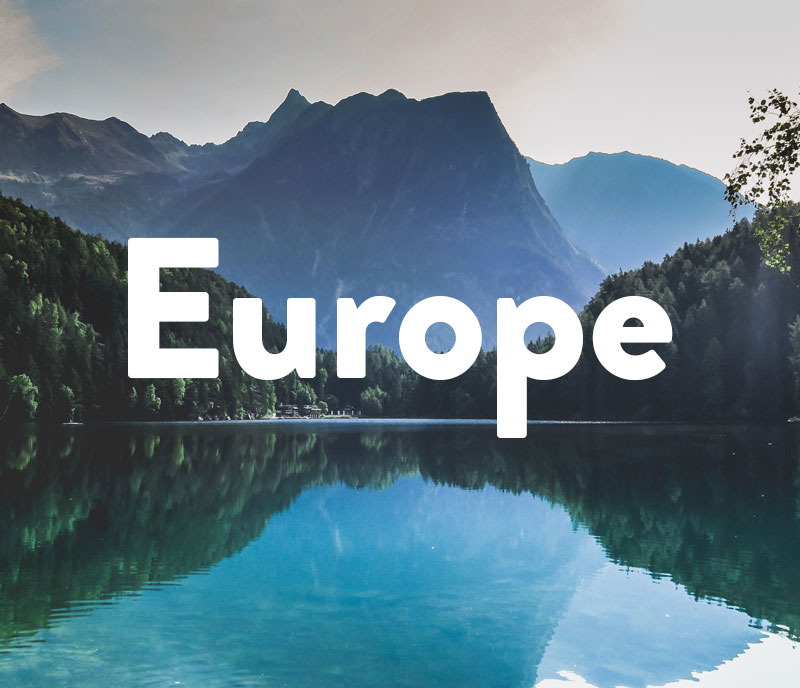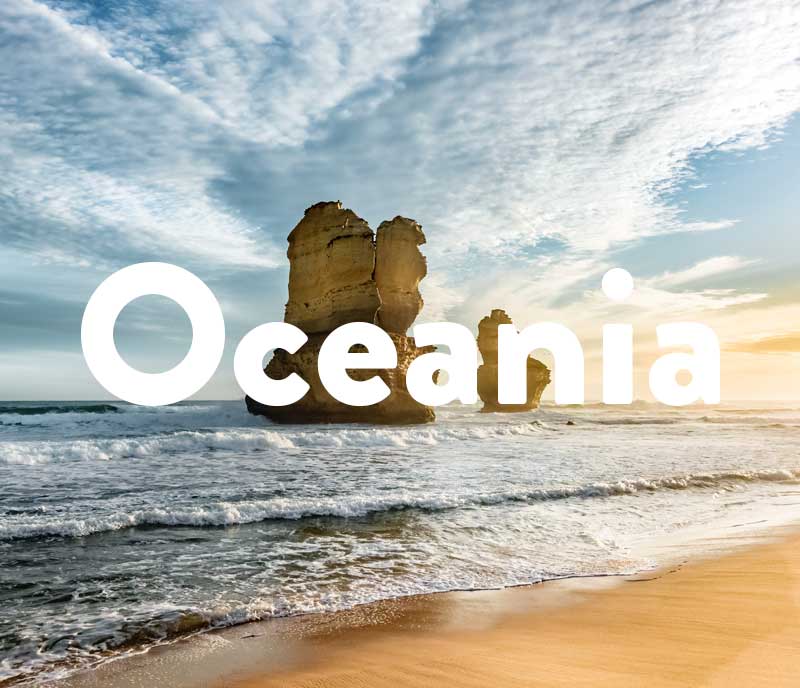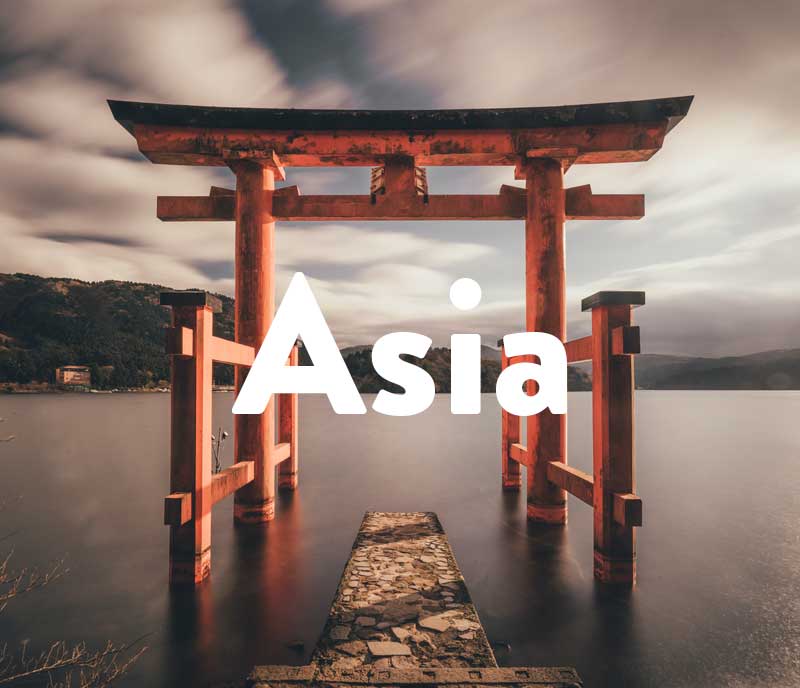There are few countries on Earth that could be counted as true natural wonders, but Colombia, hands down, is one of them.
It has amazing beaches in two different oceans, the tallest mountain chain in America, the Andes, crosses the land and ends up there, the Amazon rainforest covers the south and there are even desserts and wetlands.
Buckle up and enjoy this guide with all the information you need to plan your next holiday!
Dive into our (free) travel guides below!
.
.
.
.
.
.
.
.
The Key Info
Colombia is located in the north part of South America. It shares its northern border with Panama and the Caribbean sea, its western border with Venezuela, to the south it shares its border with Brazil, Peru and Ecuador, and to the east lies the Pacific Ocean.
Colombia is not a big country, it’s the seventh largest country in South America. It’s capital, Bogota, is located in the center of the country and it is home to over 9 million people.
Spanish is the official language in Colombia, although in certain territories the indigenous languages are also official. And in the San Andrés, Providencia and Santa Catalina Archipelago English is also an official language.
Where Colombia really stands out is in its natural wonders. There are five main natural regions, and due to this diversity, Colombia ranks as the second most megadiverse country on Earth.
Colombia in numbers
- Population: 48,258,494 million inhabitants
- Total size of the country: 1 142 748 km²
- Capital city: Bogotá
- Currency: Peso Colombiano
- Language: Spanish
- Religion: Roman Catholic (73%), Protestants (13%), non-religious and others (8%)
The 5 largest cities in Colombia
The largest cities in Brazil are Bogotá, Medellin, Cali, Barranquilla and Cartagena de Indias.
# 1 Bogotá
Bogotá is Colombia’s capital. It is located in the center of the country and it is home to over 9 million people.
While visiting, you can’t miss La Candelaria, the old part of town, where you can wonder around through a picturesque neighbor full of history and landmarks, such as Plaza de Bolivar or Palacio de Nariño.
Other places you can’t miss are the, Museo del Oro (Gold Museum) and the Museo Botero (Botero art museum). And for a breathtaking panoramic view of the city, visiting Cerro de Monserrate is a must!
# 2 Medellin
Medellin lies in a valley surrounded by the Andes in the middle of the country, in the Antioquia department and it has over 2,5 million inhabitants.
This city has reinvented itself. From one of the most violent cities on the planet to a cultural hub and a role model for many other Latin American cities.
You must go down to Museo de la Memoria (The memory museum) to understand this city and Colombia’s contemporary history in general. Colonia 13 is another must-see, for what once was one of the most dangerous quarters in the city is now a colorful and vibrant place.
# 3 Cali
Cali is home to almost 2,4 million people and it is located in Valle del Cauca region, next to the Pacific Ocean.
Cali is synonymous of Salsa dancing. So get your dancing shoes ready and head to La Sexta and the area around it are filled with bars, nightclubs, but be sure to head to Parque del Perro at least one night to see where locals and students congregate.
# 4 Barranquilla
Barranquilla is the most populous city in the north of the country with over 1,2 million residents.
Your visit to Barranquilla must experience its nightlife and dancing, things it is known for. Try out the popular bars among locals: La Troja, Frogg Leggs, the trendy Agua Helada, and Coco Beach.
But make sure you make room for enjoying a walk at dawn on Barranquilla’s famous Malecón Puerta de Oro, the city waterfront walk and checking out the Museo del Caribe (Caribbean Musseum).
# 5 Cartagena de Indias
Cartagena is located next to Barranquilla, in the Caribbean coast off the north of Colombia and its population is around 1 million people.
It is known for its historical city center and the impressive colonial Spanish fortresses. You can also use Cartagena as a base for exploring the natural wonders surrounding the city such as Barú Peninsula and its impressive beaches.
TOP Tourist Attractions
# 1 Salt Cathedral
Zipaquirá, located only one hour by car from Bogota, is known as the salt mining capital of Colombia, is famous for its Salt Cathedral, which is a Catholic church constructed almost entirely of salt within a now defunct mine. Although this is a major tourism destination, the Salt Cathedral actually accommodates nearly 3,000 parishioners every Sunday. Surrounding the cathedral is an area known as the Salt Park, where visitors can see other landmarks within the mines and learn more about the industry at the Brine Museum.
# 2 Carnaval de Barranquilla
Barranquilla hosts each year the world’s second largest Carnaval on Earth (after Rio’s). During Carnaval de Barranquilla, the city is overrun with festivals, live music and street parades. The festivities kick off with La Batalla de Flores (the Battle of the Flowers) where parade floats are decorated with flowers in magnificent and colorful designs.
# 3 Cartagena’s old town
This city was the first Spanish settlement in Colombia, and the Old has a high density of colonial architecture. Is also known as the Ciudad Amurallada (for it is surrounded by walls), contains several old neighborhoods and landmarks, like Plaza Trinidad in the Getsemaní neighborhood, which is the oldest part of the colonial city and a hub for local restaurants.
# 4 Tayrona National Park
Tayrona National Park lies in the northernmost part of Colombia. There, you can check out a lagoon called La Piscina, where a natural reef turns the lagoon into a protected swimming area. While snorkeling in La Piscina, it is possible to spot lobsters, fish and rays among the seagrass and in the reef. There are also plenty of sandy hiking trails leading to and from the coast, many of which provide spectacular views over the Caribbean.
# 5 Ciudad Perdida
Outside of Santa Marta, in the north coast of the Colombian Caribbean lies a place for those seeking a proper adventure: Ciudad Perdida (the Lost City).
Not for the fainthearted, it’ll take a 4-5 day trek to reach the city, and on your way through the 20km hike, you’ll cross various rivers, see indigenous villages and their inhabitants and see some amazing sights, culminating in the spectacular ruins of Ciudad Perdida.
Best time to travel
Colombia is located near the equator, giving it a tropical climate with relatively constant climatic conditions throughout the year. But there are two main concerns when planning a trip to Colombia:
Rain: The rainy season hits the Andes between May to July and October to December when heavy rains can fall on a daily basis though they’re usually followed by bright sunshine. Elsewhere, the Caribbean coast experiences its heaviest rainfall in September and October, and is relatively dry for the rest of the year while the lowlands experience little variation because of its tropical climate.
Temperatures: remain fairly constant throughout Colombia. Changes in temperature and rainfall are determined more by region rather than season and it’s best to pack for all weather conditions – a sweater is needed along the coast at night and a jacket in the mountains, which includes Bogota, sitting at an altitude of 2,650 metres above sea level.
So the best time for the country as a whole is between December and March, but that’s also when prices are the highest.
Holidays in Colombia
- January 1: New Year
- January 7: Epiphany Holiday
- March 25: Saint Joseph’s Day
- Holy week: March-April
- May 1: Labor Day
- June: Corpus Christi
- July : Sacred Heart
- July 20: Declaration of Independence (The day Colombia obtained its independence from the Spanish empire.)
- August 7: Battle of Bocaya (a decisive battle in the Colombian independence war)
- August 19: Assumption Day
- October 14: Day of the Races (a celebration of Colombia’s cultural diversity)
- November 4: All Saint’s Day Holiday
- November 11: Independence of Cartagena
- December 8: Immaculate Conception Day
- December 25: Christmas Day
Do I Need a Visa?
Both United States of America’s citizens and Europeans Union citizens with a valid Schengen passport or residence permit just need a valid passport to enter the country.
As for the rest of nationalities, you can check the requirements here: http://www.colombia.travel/en/practical-information/visa
Colombian Currency
The national currency is the Peso Colombiano (COP). Banknotes are available at 1000, 2000, 5000, 10 000, 20 000, 50 000 y 100 000, and coins at 50, 100, 200, 500, 1000.
Money / Credit Cards: Credit cards are of common use in the main cities, so there should be no problem paying with them. Although when travelling outside of major cities, it is a good idea to pack enough cash.
Dos and Don’ts in Colombia
Brazil, as any other country has its rules and practices that you need to know when travelling there to avoid feeling uncomfortable or even being disrespectful.
| Dos | Don’ts |
| Wear casual but appropriate clothing. | Worry about time. Colombia is not the most punctual of countries. ‘Colombian time’ can be a little more flexible than we are used to. |
| Exchange money in authorized money exchange stores or withdraw it from an ATM. | Hail a taxi at night. It’s much safer to order one from a taxi app or to ask the hotel, bar, or restaurant to order one for you. |
| Enjoy complimentary coffee everywhere you go. | Buy or take cocaine. It’s illegal, and it could put you in a lot of trouble. |
| If you need to draw money, choose an ATM inside a mall or bank rather than one on the street. | Wander around flashing cash or your expensive cellphone. Show a little tact and use a bit of common sense and you’ll be fine. |
| Be aware of your surroundings especially in touristic cities: traffic, pickpockets, etc. | Haggle aggressively. Haggling is definitely normal in Colombian markets, but they really don’t appreciate an aggressive haggling style, so remember to keep it cool in order to get a better price, and a new friend! |
| Try out at least one Bandeja Paisa, a traditional Colombian meal served everywhere. | Say you can’t dance. People really love to dance here so say yes to every polite invitation to dance. |
| Try out as much fruit as you can, there are hundreds of types there, many will be rare to a western tourist. | Worry about time. Colombia is not the most punctual of countries. ‘Colombian time’ can be a little more flexible than we are used to. |
Must-Haves for Your Colombia Packing List!
Colombia’s varying conditions makes it a bit tricky to pack for a long holiday there. It’s super hot and humid at the Carribean coas, but Bogotá is located over 2,6 km high, so nights can get very cold sometimes.
- Rainwear or waterproof clothing if you are visiting in the rainy season.
- If you are not staying in only one place, you will need both light clothes (for the Caribbean) and warm ones (for Bogotá and all of the Andes region).
- Carry at least one set of fancy clothes if you are planning on going out to dinner or dancing (and you should!).
- The standard voltage in Colombia is 110 V and the standard frequency is 60 Hz. Power plugs and sockets are of type A and B.
- Bug spray. A lot of it.
Secret tips from bloggers worldwide
- Gorgona Island: A place to enjoy the Pacific coas of Colombia, diving and whale-sightseen. – Travel Grafia
- Leticia and the Amazon Rainforest: Using this city as a base, you can explore and enjoy all the wonders the Colombian Amazon Rainforest has to offer. – Wanderluluu
- La Guajira: where the dessert meets the Caribbean Sea. – Along Dusty Roads
TOP Instagrammable Places in Colombia
- #cartagenadeindias (977k posts)
- #tayrona (205k posts)
- #comuna13 (121k posts)
- #guatape (330k posts)
- #sanandresislas (308k posts)
- #minca (92,5k posts)
- #getsemani (92,9k posts)
Fun Facts About Colombia
Did you know…?
Tejo is Colombia’s national sport. It is a game developed by indigenous groups 500 years ago that involves throwing metal pucks or discs (tejo) which contain gunpowder and explode on impact.
It is mandatory that every day at 6 am and 6 pm, Colombian radio and public television play the national anthem.
Colombians have up to 18 public holidays each year, and they sure know how to celebrate them!
Don’t stop now…
- Dresden and Saxon Switzerland – The perfect weekend trip
- Vacation in Carinthia: Experience the sunny side of the Austrian Alps
- Craft Unforgettable Postcards: Say Goodbye to Writer’s Block with AI (Coming soon!)
- Discovering the Charm of San Antonio: 5 Hidden Must-Visit Places
- Off to a Texas adventure: Our trip to San Antonio, Fredericksburg and Bandera – Part 2







